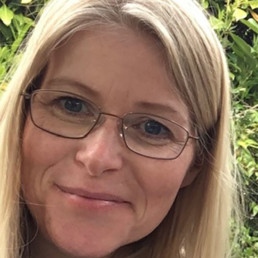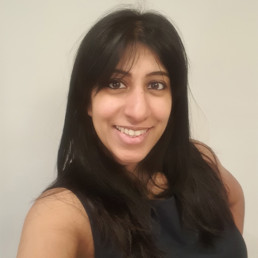Inclusion - A Parenting Perspective

Written by Helen Weston
Helen has two children with significant medical needs which has resulted in her becoming their part time nurse, teacher and advocate whilst simultaneously attempting to be a reasonable parent! Prior to this she worked in Early Years and family support.
Inclusion is a perpetual discussion amongst both teachers and parents alike. This is likely because it has a number of different interpretations which aren’t always agreed upon, it can also be both an ethos and an action. I want all children to feel safe and secure, welcome and considered whilst being educated. My son wants to be remembered that he exists.
As a parent of two children with chronic health needs, the navigation of an equitable education for them has been incredibly challenging. During the last 11 years my children have experienced the best and worst of inclusive practices in various schools.
Effective inclusive practice in my experience always comes from attitudes and ethos and never from expectations of statutory requirements. Funding has been entirely irrelevant, no amount of funding can influence cultural shift. Ethical leaders create that, not money. If a Head is unable to easily explain how their policies and planning sit within the Equality Act, for example, a rigid 100% attendance award policy, yet has an inclusion poster in their reception area, then as a parent, I know my child will never feel a sense of belonging or self worth in this school.
Schools that are child centred rather than data driven always value inclusion, they offer a genuine partnership with families and a proactive approach, again this starts with leadership and is embedded within the every day workings of the school. Teachers who are prepared to listen, reflect and act, can make a huge difference to a child’s perception of their illness or disability and reduce their feelings of difference. This enables them to be more readily able to learn.
One of my children has only ever been able to attend school on a part time basis due to his health. For 4 years he attended his school every morning, his school thought they were inclusive for facilitating a part time timetable, yet he was never offered a broad and balanced curriculum. He was only ever taught Maths and English despite regularly requesting to learn science or do PE with his peers, but their timetable was rigid.
We eventually moved him to a neighbouring school, the difference in attitudes was remarkable. He was listened to and the timetable was swapped around. For the first time in his school career he did PE, science, & enrichment. He was 9 years old. He also took part in his first ever Christmas concert because the practices were moved to the mornings so he could be involved . He had real friends for the first time, adults had role modelled to them that he was an equally valuable member of the school community. His friends looked out for him, helped him, cared for him because this was the ethos of the school and these values were their norm.
At his previous school he had had long periods of time off unwell, upon return to school, staff and children alike would rarely ask after his well-being. In contrast, in his new school his teacher set up a video call with him and his classmates so they could have a chat and check in with one another.
She would also provide him with allergy safe treats when giving a whole class reward. He had never experienced this before. Ultimately inclusion was everyone’s responsibility and not just the role of the ‘Inclusion Manager.’ My experience identified that by outsourcing inclusion to just one individual, others were removed from ever having any consideration for inclusion.
School trips can be a real eye opener as to how inclusive schools are. We have had numerous experiences of schools not bothering to plan for accessibility or do risk assessments therefore having to do them myself last minute ( and on one occasion discovering the activity was unsafe for our son’s medical condition.)
Yet there have also been examples of how early planning and communication can enable trips to be successful, not just practically, but also emotionally positive. My son attended a school residential as a day visitor. The timings of his visits were chosen in collaboration with him, myself, school as well as the activity centre, to ensure he was able to access all the activities offered at that time safely. He was still allocated a room and a bed, his tube feeds were fitted around activities, pacing was done subtly, a special harness was used. Almost three years later, he still talks about that trip with such joyful memories.
The ‘what can we do’ approach is the best way of creating meaningful change, including the child & parents in working through solutions in partnership with schools. My youngest is now in secondary and I note with interest, their use of their term, ‘flexible’, over inclusion. Right now, this is what works best for my son, flexibility, trust and regular communication. Inclusion is not the same for every child but the essence of belonging should feel the same for all.
Toothless Lionesses

Written by Bhamika Bhudia
English teacher and lead teacher in a mixed comprehensive secondary school in North-West London. She tweets as MissMika_Eng
Does the “aggressive” Woman of Colour trope lead to a generation of toothless lionesses?
Women of colour have to navigate the western world with careful footing. Sidelined and stereotyped within the media and underrepresented at leadership tables, conducting herself in offices, classrooms and meetings is a difficult, political affair. Managing standing up for herself, being heard, demanding a seat at the table all the while not being deemed too aggressive, requires strategizing but at what cost? Surely this lack of freedom to express herself honestly and fully has detrimental effects on her confidence, self worth and identity as a whole?
In my quest to make my workplace and environment a more celebratory and inclusive place, I have had to take a real look inwards at my role as a woman of colour (a term I am still uncomfortable with), and I have had a rude awakening!
I have always considered myself (and I think have been considered) to be a confident woman. I am able to stand up for what I believe in, I have carved myself a seat at the table and my voice is one that is heard. But as policies are put into practice and ideologies around celebrating culture and acknowledging diversity are being discussed at that very table, I have come to question how many waves I actually make, how often I quietly avoid a stir and how many self-sabotory behaviours I demonstrate.
Diversity-hire:
According to the School Workforce Consensus (2019) only, 6.2% of assistant heads and deputies are from ethnic minorities and while women comprise 67% of the country’s headteachers, a mere 3.9% of them identify as non-white. The statistics speak for themselves, yet despite knowing this, every job and promotion I have ever gotten has been followed by inner doubt questioning whether I was a diversity hire. The odds are clearly stacked against me, but this toxic imposter syndrome based solely on my demographic is obviously very damaging. And it can’t be just me – I didn’t invent this notion or phrasing, it has to come from somewhere. I am very doubtful that I am the only one who has felt this way yet my achievements are continually downplayed in my mind because I happen to fit this box that ironically enough, isn’t actually getting filled in the real world!
Say my name!
It is now widely acknowledged that continual mispronunciation of people’s names is a microaggression and is damaging. Spending my entire life as Bhamika Bhudia has been tricky. I have always expected people not to get my name right to begin with – it’s an unusual name – and I take absolutely no offense when people don’t get it right away. I have been quick to correct them, the first, second and third time but after that, I drop it. I have worked with people for years that have continued to call me by some other moniker. Until this last year, I have let these aggressions slide for fear of being rude, making things awkward or making other people feel bad. It is not ok, and should not have taken me 37 years of life to realise this. It is my duty as a role model for children to address this but for my entire life, I have placed the feelings or others ahead of my own; clearly I did not feel my name was worthy enough of causing a stir.
Bite your lip:
On the same note, causing that stir is a real predicament for those in my demographic in far more contentious circumstances than pronunciations. I have heard many a story of meetings, conflicts and general grievances of women who look like me, shut down because they were deemed too “aggressive”. Conducting myself in sensitive circumstances is a tight-rope I tread very carefully on. I always say, with a strong hint or irony and an even stronger note of bitterness, that my life would be so much easier if I was a cryer. If, when it came to conflict, I was the sensitive one who could alleviate circumstances and even shift responsibility by showing my emotions and expressing my hurt/offense in a more “feminine” way. Now I’m not saying all tears are manipulatory nor am I condoning toxic femininity but there have been times and continue to be so where I am unable to express my offense at derogatory comments or behaviours towards me, no matter how professionally or politely I handle them, for fear of becoming the aggressor. I have bitten my lip, publicly and privately because when it comes down to it, I am afraid that I will be blamed for upsetting the other person despite being the offended party. I always assumed it was a “me” thing, perhaps even a “female” thing, but once again, this reflection has led me to connect the dots. Women of colour being branded and dismissed as “aggressive” is a historical thing; it does not stop at me nor did it begin there.
This post has been very difficult to write. I have taken a look at myself and honestly I do not like what I see. I thought I was strong, I thought I was a good role model and discovering that I am far from that has been a difficult discovery indeed. But now I have seen that despite my “aggressive” nature, I am still doing myself and every woman of colour after me, a huge disservice by bowing down, and sitting quietly. My teeth may have been blunted up until now, but at the risk of ending with a huge cliche, I will make sure my lioness comes out in full force, not only for myself but also for those I model my behaviour for.
The Psychology of Our Quarrels

Written by Russell Ridgeway
Russell Ridgeway is an American writer based in Budapest, Hungary. He writes in business, tech, and fashion as well as creative fiction. You can reach him by email (russell@lensawork.com), or on LinkedIn and other social media platforms.
Quarrels do happen in our everyday relationships, with our family members, significant others, co-workers, and friends. Is it normal to have them regularly? What can we do about them? Do they have to be ongoing, or are there specific ways to reduce their frequency and intensity? Let’s take a closer look at this actual and significant topic, and find solutions that could work.
There are those types of people who avoid conflicts in contact, sometimes both parties. In other relationships, one person tends to fight more than the other, or the people keep changing roles. And it is becoming a pattern, which they cannot handle well, as the people involved are not sure what to do. No wonder why; we lack this kind of education!
How Quarrels Work
By observing, analyzing, and coming up with solutions to your quarrels, you can make your life better. Doesn’t matter who you usually fight with. This is what you, or more ideally, both of you should be doing. Realize that each of these scenarios has a starting point, a major phase with intense emotions, and a closing point. Why is this crucial to observe?
By doing so you can see some interesting patterns. Be it a relationship between married couples, parents and children, siblings, or co-workers, it always happens similarly! If you observe them, you can realize that there are only a few typical scenarios that keep repeating themselves. When the two (or more) of you start with the same words, actions, or things!!
Think of the analogy of a cup. Your cup is your relationship. When you fill into it a bit of a quarrel at times, it becomes fuller and fuller until it reaches its full capacity. That’s also the point when your relationship can’t take more at any one time, so it blows up!
How Do We Fight
You should take a piece of paper, and write down the following:
- How do you usually start fighting?
- What do you say to each other?
- How do you both feel?
List two of the most common types of your quarrels. Try looking at yourselves like someone neutral, an outsider. Remember, you don’t have to be one with your fight! Key points to consider: In what kinds of situations do they come up? How do we usually behave? What is the other saying that triggers us? How do we both react to each other?
Look for those situations in which these fights appear. Observe both of your moods consciously. Were you already under pressure because of other things? Were you tired? Did you sleep enough? Were you adding fuel to the fire just because the other person also hurt you? Did you try to consciously stop fighting, hurting the other’s feelings, or come to a solution?
You Are in Control
Did you allow the fight to take the best of you, feeling you are powerless? We often give away our power to the fight, when we should aim to do the opposite: disallow it to become ugly in the very beginning. Before expressing your pain, and thus hurting the other person, ask yourself to take it easy. Say to yourself, I am in control, not my pain. You should aim not to hurt the other.
Start to take control the earliest possible, before the quarrel gets big! This is the best way to alter its outcome to what you want it to be. Many times, what we say to the other person isn’t as hurtful as how we say it. When this happens, remember, that this won’t make your contact better and surely doesn’t lead to your desired outcome! When you start observing it, you are in control!
Fighting is like being in trance, we tend to lose our conscious behavior. Our survival mechanisms are turning on, switching off our intellect. So, what you need to do is, get yourself out of this state! Start moving if you were sitting earlier, go out into the fresh air, take some deep breaths, wash your face… Do the same with your feelings, switch them to positive ones! Remember who is the boss!!
Quarrels and fights are inevitable. Like it or not, they are a natural part of each human connection. Therefore, your aim should be to avoid them as much as possible. How? By reducing their frequency, strength, and length. If you strive to make them more and more temporary, and less significant each time, you create a win-win situation for everyone.
Think of things that the other person likes and be willing to give them that instead of what you like. Have a conversation to clarify each other’s needs before it is too late. If you want to make any of your relationships work.
A New School Year. A More Inclusive School Year?

Written by Johan Jensen
Director of All-in Education. His consultancy work includes organisational development, leadership development, strategic communications, product development and diversity & inclusion strategy development.
In July 2020, I urged school leaders to be cautious. In the wake of George Floyd’s brutal murder and the global reactions to racism, I was approached by numerous education institutions who felt bewildered about what to do next. There was certainly a sense of anxiety. It was understandable that organisations wanted to do something and demonstrate activity. I told them, “If you panic into this work, you’ll soon see that you’ll panic out of it”. In my experience this still stands true.
Over the past year, the most powerful discussions that we have had with school leaders have been about self-reflection, especially how we relate and respond to difference in all its forms. The conclusion of most of those conversations is that when we take an honest look at ourselves and the people around us, we don’t like diversity. In fact, I’d go as far as saying that we are naturally geared towards repelling it. It’s called ‘homophily’, the love of same.
Achieving greater diversity and more inclusive schools requires purposeful self-reflection, critique and behaviour and systems change if we are even going to have a fighting chance to create the change that education still so desperately needs.
The majority of the schools, and groups of schools, we’ve worked with have really taken this to heart. It’s been challenging for them. They’ve had to confront uncomfortable truths about themselves and the institutions they’re responsible for. But, they’ve seen how this won’t serve the purpose of creating the next generation of leaders, followers and members of society. This is ground-breaking stuff.
The schools that our team has worked with have taken the first step in this journey, which is to listen. Listening to staff, students and alumni about their experience of belonging, psychological safety, diversity and inclusion. By supporting the senior leaders through coaching, they’ve been able to really listen to what their peers, staff, pupils and former pupils are experiencing and giving them the grounding for creating an even better experience and future.
The strategy that follows these first steps is long term and focuses on values, the business case for changing the way the school operates, the vision for what an inclusive school looks and feels like and how the institution will hold itself accountable in achieving this change.
Some schools have achieved incredible results, with one grammar school recruiting 80% non-white British staff in this year’s September intake. But, achieving greater diversity is only part of the puzzle, achieving inclusion is a totally different game.
How will you create an inclusive school?
We are delighted to be running with RSAcademics a free case study webinar on 13th October to share our experiences and those of some of our clients over the last year, and we look forward to seeing you there to help you continue your thinking on inclusivity.
Please sign up to the webinar here.

